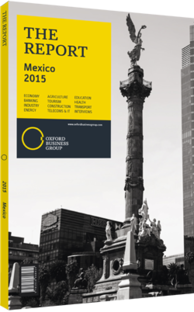Manuel Herrera Vega, President, Concamin: Interview

Interview: Manuel Herrera Vega
How would you characterise the level of sophistication in Mexico’s industrial sector?
MANUEL HERRERA VEGA: Mexico has a good level of sophistication in the manufacturing sector. According to studies on the subject by consulting firms and the OECD, 52% of our total exports are of medium to high levels of sophistication. Exports are concentrated on industrial goods in the automotive, aerospace, telecommunication and IT sectors.
We are currently taking steps to enhance our positioning. Firstly, government, industry and education institutions are working together to continually improve all production factors. These efforts are being aligned through the new Law for Productivity and coordinated by the National Council for Productivity. Secondly, we are launching the National Competitiveness Agenda – an effort to measure and improve national and regional competitiveness with detailed projects, visible responsible parties and an accountability system.
Innovation is the third major column to enable Mexico to move forward in the region. Jointly with the Ministry of Economy, we are pushing for an aggressive agenda on the subject. Our goal is to align our innovation efforts to create value for the Mexican productive sector. All initiatives on the subject should be mapped; all innovation needs of the industrial sector should be registered, documented and published. Innovation should be part of mainstream Mexican culture.
What incentives are in place to attract foreign direct investment (FDI) in the industrial sector?
VEGA: There are incentives at the federal and state levels. ProMéxico is heading efforts to attract strategic investment projects. These are focused on major manufacturing investment projects, with the automotive industry a leading sector for FDI in Mexico. At the state level, governments have made a tremendous effort to provide support in training, infrastructure and other factors related to local physical conditions.
Another important area is the aerospace industry, which requires a more complex approach than the automotive industry. Incentives are relevant, but of equal importance are research and development funding, talent creation and international certification for safety and market access. These factors can allow us to create critical mass for world recognition.
How can research and innovation be fostered?
VEGA: We need to differentiate both terms: research is the scientific basis for innovation, while innovation is the result of a synthesis of multiple elements. These include competition, vision, risk-taking, open markets, talent and, of course, research.
Mexico should focus on innovation and all its components. We will be leading efforts on the Inter-sectorial Innovation Committee, led by Minister Ildefonso Guajardo, for the creation of the Mexican Innovation System. This has a holistic approach, encompassing the whole of the innovation cycle. From the gathering of information on innovation efforts and innovation needs, to the systematisation thereof, the set-up of cultural and social kickers (recognition, prizes, campaigns, incentives and guarantees for productive innovation), all the way through market creation and value protection (intellectual property, enforcement, promotion, etc).
To what extent could the Trans-Pacific Partnership (TPP) impact Mexico’s industrial sector?
VEGA: Mexico presents an open and highly competitive offering to the international market: it has free trade agreements with 44 nations representing over 1.2bn consumers, including the most productive nations on the planet. For the past 30 years, the Mexican industrial sector has learned to compete in a global market. Our foreign trade numbers, which add up to just under $800bn a year – or 66% of Mexico’s GDP – make us one of the 10 most open economies in the world. The TPP will let us have clear rules, a level playing field, and reciprocal conditions with countries that are part of the global chain in which we are players, and which are always necessary for long-term business relations.
You have reached the limit of premium articles you can view for free.
Choose from the options below to purchase print or digital editions of our Reports. You can also purchase a website subscription giving you unlimited access to all of our Reports online for 12 months.
If you have already purchased this Report or have a website subscription, please login to continue.

